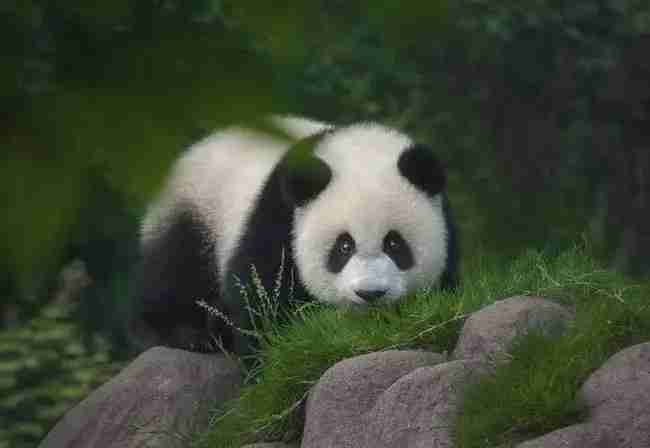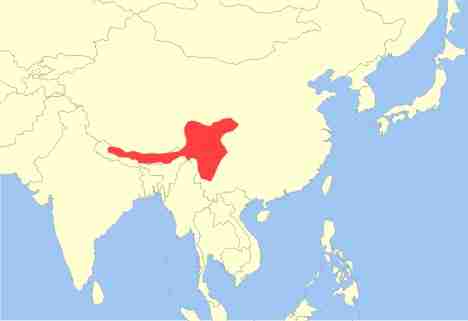The giant panda is one of the unique animals available in China. This animal resides in mountain ranges in the country. Most people around the world consider the giant panda a living fossil.
Here is a fun fact. Did you know that the giant panda communicates through spraying urine or clawing trees? We will discuss more regarding the giant panda, including its appearance, habitat, food, and its importance to the Chinese. Read on!
What is a panda?
This is a form of bear species with a round body and white and black fur. The panda is a bear that is classified under the family Ursidae. It is also an animal of the phylum Chordata. This is one of the oldest types of bears that exist to date.
It differs from the red panda in that it comes in a bulkier body and does not have any red color. This mammal shares some similar traits with the raccoon. The giant panda comes in two subspecies: the nominate and qinling panda. Some of the things that can be used to tell the subspecies apart include genetic differences, color patterns, and cranial measurements.
The nominate giant panda is common in Sichuan, China. This subspecies mostly has a black and white coat. Qinling Mountains is home to the Qinling panda subspecies. This subspecies is different from the nominate giant panda in that its coat is made up of a white and brown pattern.
How panda looks like

This panda species is one of the most captivating animals in China. It has a similar body shape as the average bear and features a round face and colored coat. The most common subspecies of the giant panda contain black and white fur. The black color is mainly found around the panda’s shoulders, ears, limbs, and muzzle. The white color is found on the remaining part of the bear’s body.
When it comes to the length of a giant panda, an adult is around 1.2-1.9 meters long. This mammal also has a tail that is about 15 cm long, which makes it among the bears with the most extended tails. The only bear that has a more extended tail than the giant panda is the sloth bear.
This mammal can grow up to 90 cm at the shoulder. The panda’s fur not only makes this animal stand out from the rest, but it also camouflages during different seasons. It enables the animal to disguise itself in snow.
Since the wool coat of the giant panda is often thick, it enables this animal to remain warm despite the cold in the mountains. In terms of weight, a giant panda is quite bulky. The weight of this animal varies based on sex. Female giant pandas are lighter than their male counterparts. Generally, an adult giant panda can weigh up to 115 kg.
Where panda live
In the past, the giant panda used to live in lowland regions in China. This animal, however, was forced to move and look for other habitats due to human activities such as cutting down trees and farming. The Giant Panda now resides in the bamboo forest in China.
Though this animal is most common in the central part of China, a few giant pandas reside in the neighboring provinces. Some of the Chinese provinces that are known to be home to the panda include Gansu, Shaanxi, and Sichuan. The giant panda is one of the conservation-reliant species in china. According to a report, this animal has been living in captivity for years now.
What is panda food

Millions of years ago, the giant panda was omnivorous and became a herbivore when the Ailuropoda microta emerged. This mammal spends most of its time looking for food in the Bamboo forest. Since the giant panda is a herbivore, it mainly eats bamboo shoots.
The mammal has flat but broad molar teeth that enable it to crush and consume bamboo effortlessly. Since the wrist bone of a giant panda is large, it serves as a thumb and helps the animal hold bamboo. A giant panda can feed on 9-14 kgs of bamboo shoots in a day.
A giant panda can eat more than 20 different species of bamboo. Some of the common bamboo species that a giant panda prefers include Fargesia Rufa and Fargesia dracocephala. Though this animal is a herbivore, it can still eat other types of food such as eggs, fish, or meat. A giant panda can defecate up to forty times in a single day.
How many pandas are left in the world

We mentioned that the giant panda is a vulnerable species. People have been poaching giant pandas for their soft furs for many years. A report in 2006 revealed that there are only 1000 giant pandas in the wild. In 2020, the number of pandas in the world increased to 1864.
Why are pandas important to china?
The Chinese consider the giant panda as a noble creature. This animal is essential in the country since it has a couple of uses. For instance, in ancient times, the Sichuan used urine from the giant panda to melt swallowed needles. Some Chinese also used giant panda pelts to control menstruation.
In the 70s, the Chinese gave giant pandas to Japanese and American zoos as gifts. This was referred to as panda diplomacy, and it was a form of cultural exchange between the countries. By the 1980s, The Chinese began giving out giant pandas as loans rather than gifts.
What does a panda symbolism

According to Chinese culture, the giant panda symbolizes peace. In 2005, this country offered a breeding pair of pandas to Taiwan as a peace offering.
Conclusion
The giant panda is among the rare mammals that exist today. This terrestrial animal is relatively calm and likes defining its territory. Even though the giant panda is primarily black and white, there is a species that comes in a white and brown pattern. Though many people used to poach this animal in the past, the conservation authorities no longer consider it an endangered species.